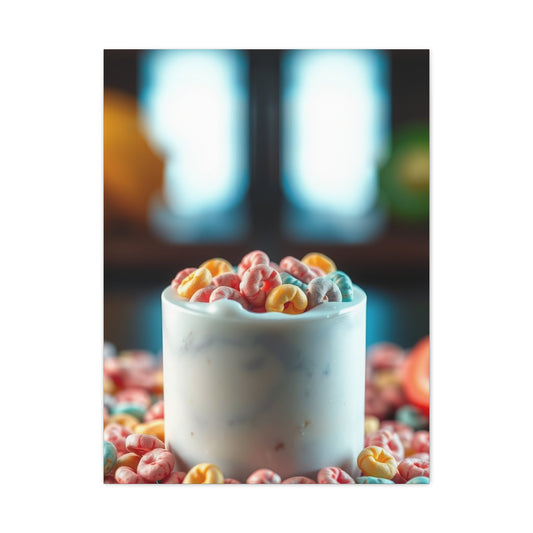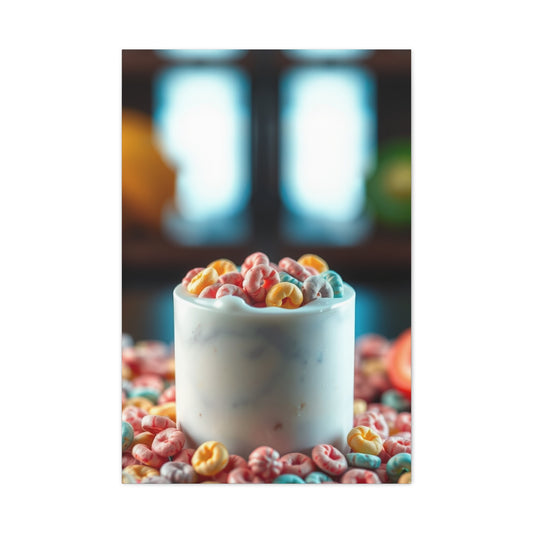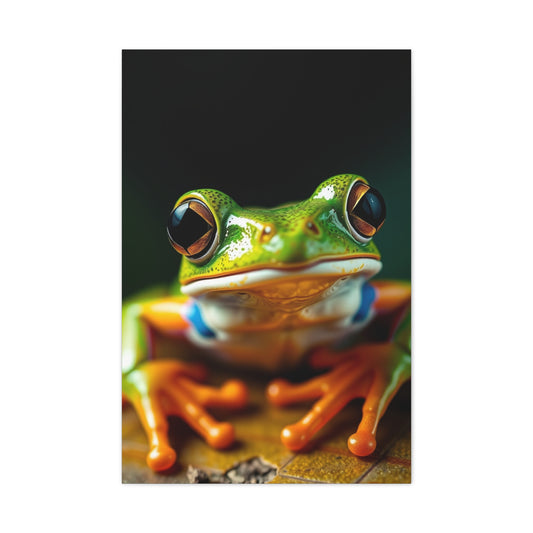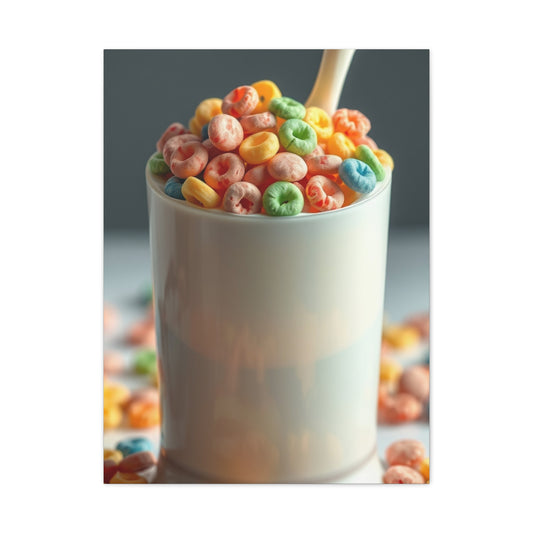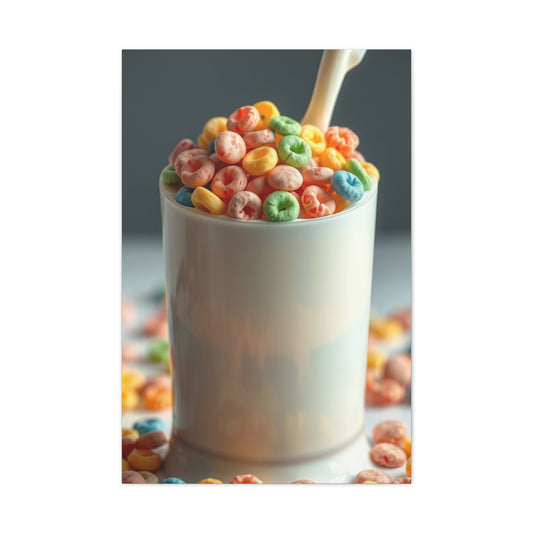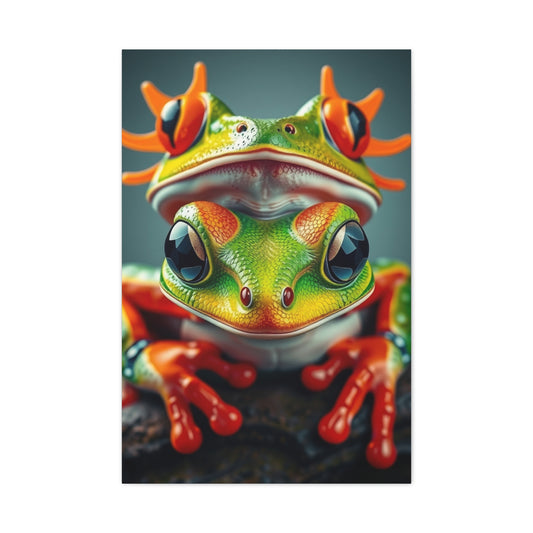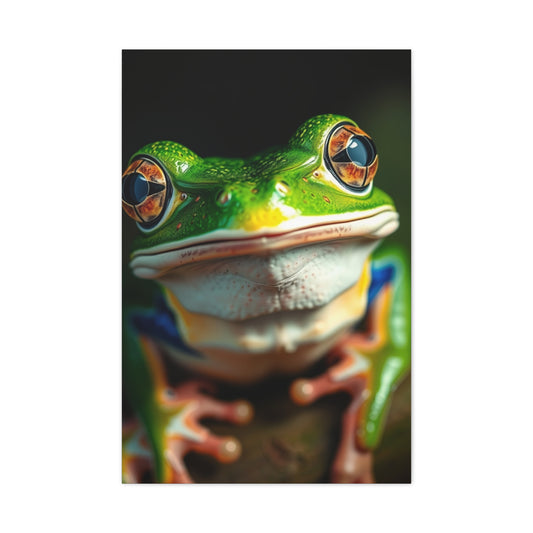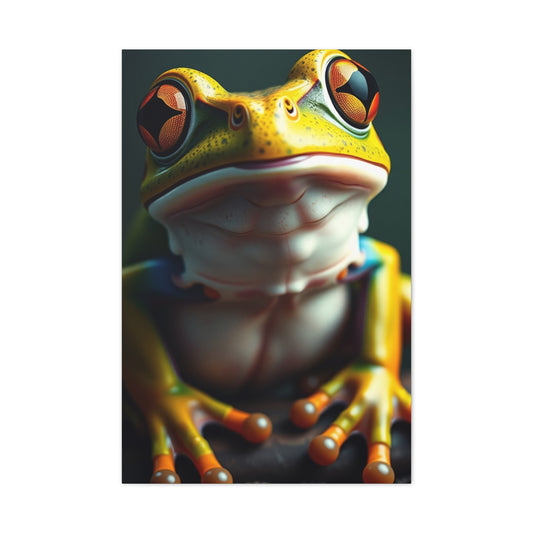Designing a home gym in 2025 goes beyond just installing machines or clearing a corner for a yoga mat. It’s about crafting a holistic environment that energizes, uplifts, and aligns with your personal fitness journey. One of the most transformative design elements you can incorporate is wall art. It provides an emotional and visual layer to your space, turning a utilitarian workout zone into an immersive, inspiring retreat.
Whether your home gym is a dedicated room or a creative extension of a bedroom, garage, or basement, carefully selected artwork can redefine how the space makes you feel. Wall art doesn't just fill an empty wall—it becomes an anchor for your mindset, your motivation, and your overall aesthetic.
Energize Your Workout Space Through Artistic Expression
The influence of art within a fitness space goes far beyond decoration—it becomes the emotional heartbeat of your workout environment. In home gyms especially, where the line between comfort and discipline often blurs, wall art plays a central role in creating a space that evokes inspiration, clarity, and momentum. The psychological effects of visual aesthetics can influence motivation, improve focus, and enhance overall wellness, making the integration of art an essential part of holistic gym design.
When you enter a fitness space, your first impressions are not just shaped by the equipment—it’s the color, the layout, the atmosphere, and most importantly, the visual storytelling of the space that sets the tone. Wall art becomes the silent motivator, the visual affirmation of your personal goals. It’s the cue that tells your mind and body: this is a space for growth, strength, and transformation.
The impact is particularly profound in home gyms where the design must balance functionality with aesthetics. Whether you’re setting up a gym in a spare room, garage, basement, or even a multipurpose corner, the way you dress the walls can dramatically influence the energy and purpose of the space.
Harnessing Visual Energy for Intense Training
For individuals drawn to strength training, cardio, circuit routines, or high-intensity interval training, the atmosphere of the room must mirror the energy demanded by the workout. In these settings, your surroundings should activate your drive and elevate your stamina. The right wall art can serve as an energetic catalyst, encouraging motion and enhancing your sense of determination.
Dynamic compositions such as abstract splashes of color, graffiti-inspired text, or vivid silhouettes of athletes in motion can simulate the buzz of a high-performance training center. These visuals ignite a psychological response—adrenaline, focus, competitiveness. They not only inspire movement but also sustain it through longer, more effective sessions.
Designers often recommend bold, angular lines, geometric patterns, and saturated tones like crimson, cobalt, or electric yellow in artwork for high-energy gyms. These visual elements have been proven to activate mental engagement and help maintain consistency throughout repetitive or grueling routines.
Typography also plays a powerful role. Large-format quotes in expressive fonts, whether motivational or commanding, act as internal cues. Phrases like “Dominate the Day,” “No Limits,” or “Power Through” displayed in striking designs can become subconscious affirmations that reinforce mental resilience.
When strategically placed near equipment like squat racks, treadmills, or rowing machines, such artwork reinforces a performance-driven mindset. It helps to transform a basic room into a zone of intensity, focus, and empowerment.

Fostering Serenity for Mindful Movement
Not every workout is about intensity. For those who use their home gym as a sanctuary for self-care, introspection, and recovery—through Pilates, yoga, barre, or breathwork—the environment should reflect that philosophy of gentle strength. In these spaces, wall art must encourage calm, presence, and mindful flow.
Soft, organic forms and a muted color palette are ideal. Think brushstroke landscapes, minimalist watercolors, or abstract natural elements like waves, leaves, or clouds. These visuals create a tranquil atmosphere that helps to regulate breath and ease the nervous system. Nature-inspired imagery—such as forest scenes, ocean vistas, or celestial artwork—evokes a sense of connection and spaciousness, essential for deeper relaxation and meditation.
Art in these environments should feel expansive and breathable. Cool hues such as sage green, lavender, sky blue, or muted taupe support emotional equilibrium. Symmetrical compositions and flowing layouts help ground your attention and reinforce the meditative rhythm of slower-paced exercises.
In wellness-focused gyms, where peace and intentionality matter more than speed or output, the visual field should not compete for attention. Instead, it should gently draw you inward, grounding your practice in the present moment. A series of cohesive art prints, for example, can mirror the structure and sequence of a yoga flow—each one complementing a part of your session, from centering to cooling down.
Building an Emotional Connection Through Intentional Aesthetics
The real power of gym wall art lies in its ability to forge an emotional connection between you and your space. When the imagery on your walls aligns with your fitness goals, values, and emotional rhythm, your workout transforms from a task into a ritual. It’s no longer just a room—it becomes an experience.
Home gyms are deeply personal by nature. Unlike commercial facilities, where design caters to the masses, your gym is an intimate extension of your identity. Every visual decision you make—be it a motivational canvas, a hand-painted mural, or a serene photographic print—should feel like a reflection of your journey.
This emotional congruence elevates commitment. When you feel aligned with your environment, the excuses shrink and the drive expands. Even on days when your energy feels low, stepping into a space that reflects your inner purpose can be enough to spark action.
Textures also matter. Canvas, wood-mounted art, or framed prints introduce a tactile depth to the room that amplifies its sensory richness. Pairing these textures with intentional lighting—such as warm-toned LEDs or soft natural light—can highlight artwork and set the mood for various workout styles.
Additionally, art can create visual continuity across multiple workout zones. If your home gym serves different purposes—such as strength on one side and stretching on the other—use art to distinguish zones emotionally. A vibrant panel above the weights and a calming series near the mat area can define function and encourage emotional transitions.
Creating a Lasting Visual Impact That Evolves With You
As your fitness goals evolve over time, your gym environment should grow with you. The beauty of wall art lies in its versatility—it’s one of the few design elements you can update easily without a full renovation. Swapping a piece of artwork can refresh your gym’s atmosphere in seconds, aligning it with new intentions or seasonal shifts.
In 2025, personalization and adaptability are key trends in home fitness design. People are curating spaces that not only support exercise but nurture emotional wellness, creativity, and resilience. Wall art enables you to do all three—whether by incorporating mixed media, abstract visuals, layered colors, or even augmented reality experiences.
Ultimately, wall art in a home gym isn’t about filling space. It’s about shaping energy, reinforcing mindset, and creating a physical embodiment of your goals. The right artwork won’t just complement your gym—it will fuel your performance, enhance your emotional well-being, and make your home gym a space you’re genuinely excited to return to each day.
Infuse Your Personality into Every Rep
When it comes to designing your home gym, personalization isn’t just an aesthetic choice—it’s a psychological advantage. Your workout space should mirror your ambitions, passions, and preferences because fitness is a deeply personal journey. Just as every person’s routine differs—be it lifting weights, practicing yoga, or performing bodyweight flows—your environment should evoke a sense of individuality that fuels consistency and commitment. Wall art is one of the most expressive and versatile ways to reflect your unique story in your gym.
Art carries emotional weight. It can remind you of a specific goal, a mindset, or a memory tied to your fitness evolution. That emotional resonance makes it far more powerful than functional elements like machines or storage racks. While those serve the body, art serves the mind—and motivation often stems from the mind first. Choosing the right wall art can help initiate momentum, sharpen mental focus, and create an emotional anchor in your workout zone.
Whether your drive comes from self-discipline, personal transformation, or competitive fire, the visuals you surround yourself with matter. Consider wall art that aligns with your personality. If you find strength in simplicity, black-and-white photography of athletes or crisp calligraphy featuring empowering words might resonate with you. If you thrive on color and movement, abstract compositions with vibrant hues or expressive brushstrokes might speak louder to your creative side.
Your art doesn’t have to be literal to be meaningful. Geometric forms, surreal landscapes, or bold typographic designs can all become visual metaphors for personal growth and resilience. Choose pieces that reflect the energy you want to channel: clarity, power, fluidity, determination, or calmness. Each time you enter your gym and see those pieces, you’re reconnecting with your purpose.
What’s more, the act of curating your wall art can itself be a form of motivation. As you search for pieces that align with your goals, you're taking intentional steps to transform your space from a basic workout room into a mental performance studio. This process of self-curation can reignite passion for training and make the gym feel like a place of empowerment rather than obligation.
Telling Your Story Through Intentional Design
A truly personalized gym does more than hold your equipment—it tells your story. Whether you've just begun your wellness journey or have achieved significant milestones, the space should celebrate your growth. Wall art helps chronicle your progress visually. It can represent phases of your training, commemorate key achievements, or simply reflect the mindset that has guided your transformation.
One effective approach is to create a visual narrative across your wall space. For instance, you might place a bold motivational quote in the center, flanked by images or artwork that symbolize key stages of your journey—perhaps a representation of endurance, self-discovery, or inner peace. This arrangement doesn't just decorate the room; it tells a visual story that evolves as you do.
Personalized elements like your favorite mantras, initials, or even a minimal mural reflecting your philosophy can strengthen that connection. Typography pieces in a style that matches your home’s tone—whether classic serif, urban street-style, or handwritten script—offer a daily mental boost. When you surround yourself with visuals that represent not just what you want to do but who you are becoming, you train with greater intention.
If your training approach is eclectic, so can be your art. Mix framed posters of athletes you admire with symbolic pieces like rising suns, open roads, or architectural silhouettes. These subtle metaphors evoke movement, growth, and strength in ways that resonate on a deeper level.
Even color choices can be part of your narrative. Use tones that match your personality—energetic reds and oranges for fiery intensity, calm greens and blues for balanced routines, or moody monochromes for a minimalist, focused aesthetic. With each visual element chosen intentionally, your gym becomes more than a room. It becomes a sanctuary of self-expression.

Designing Distinction in Shared Spaces
In homes where space is shared, multifunctional, or open-concept, creating separation between your gym and other zones can be a creative challenge. Instead of building physical walls or using bulky dividers, wall art offers a seamless way to establish boundaries while adding aesthetic and emotional depth.
The key lies in using visual anchors. One large-format piece or a triptych-style canvas can define your workout zone within a shared room. For example, a compelling grayscale athlete silhouette or an intense close-up of a sprint in motion can instantly differentiate your fitness area without disrupting the flow of the surrounding space.
In shared environments—such as a living room corner, a converted office, or a garage with multiple functions—your art should serve a dual purpose: creating visual interest while asserting identity. Think of it as planting a mental flag in your space. When you walk into the room, that artwork silently signals, “This is where I train.”
Coherence with the room’s existing style is crucial for harmony. If your home features a modern industrial look, consider gym art with raw textures, muted tones, and bold contrast—such as black-and-white photo prints, concrete textures, or minimalist line drawings. If your home has a rustic or organic aesthetic, choose nature-inspired themes like forest silhouettes, vintage sports illustrations, or sepia-toned portraits to maintain cohesion.
Thematic consistency ensures your gym doesn’t feel out of place. It becomes integrated into the architecture of the home, while still holding its own identity. You can even use lighting to enhance this distinction—spotlights or LED strips placed above or below your wall art can draw the eye and reinforce the gym’s boundary without adding clutter.
Creating a Visual Connection That Enhances Motivation
When thoughtfully curated, your gym art becomes a form of environmental psychology—nudging you toward higher performance, better focus, and greater emotional engagement. Every piece on the wall contributes to the narrative of who you are and who you're striving to be.
Motivation fluctuates, but spaces designed with intention can reignite it. Imagine walking into your gym on a sluggish morning. Your eyes land on a painting of a summit view—symbolic of achievement—and next to it, a quote that reads, “Your only limit is you.” Suddenly, the excuses feel smaller. The connection is emotional, not just visual.
It’s also worth considering how often to refresh your wall art. As your goals evolve, updating your visual environment can mirror that transformation. You might start with foundational mantras, and later add more nuanced artwork reflecting mindfulness, precision, or mastery. This allows the gym to grow with you rather than stagnate as a static space.
Additionally, the art you choose can influence the type of workouts you gravitate toward. A calm, flowing piece might encourage more stretching and mobility work, while a bold, angular composition could push you toward strength training. This subtle psychological cue adds another layer of intentionality to your design.
Your home gym is a canvas—one where every visual choice contributes to a story of resilience, purpose, and identity. By selecting art that resonates with your journey, you’re not just decorating a room. You’re building a space that champions your evolution, every single day.
Choosing the Ideal Shapes and Layouts for Maximum Impact
Designing a home gym that feels both energizing and well-composed often depends on the finer details—especially when it comes to how wall art is arranged. The layout, size, and shape of your artwork can either elevate the visual balance of the room or unintentionally create clutter and visual disharmony. When carefully curated, art becomes a functional design element that influences how the space feels and functions, reinforcing your workout experience without becoming overwhelming or disjointed.
In home gyms, where each square foot is often carefully allocated for equipment and utility, wall art layouts must be strategic. From single-statement pieces to multi-panel arrangements, the form your artwork takes should echo the flow of the room and resonate with your energy output. The visual rhythm you introduce through your walls can simulate motion, structure relaxation, and help delineate workout zones, ultimately creating a highly immersive space tailored to your fitness routine.
Equally important is how wall art complements the vertical and horizontal proportions of your walls. Art that's out of scale or misaligned with gym equipment can throw off spatial harmony and create distraction rather than inspiration. But with the right approach to layout, shape, and size, you can add meaning and energy to your gym without sacrificing function or fluidity.
Solo Canvases and Vertical Layouts for Refined Simplicity
Simplicity in wall design often carries the most power, especially in compact home gyms. A solo canvas—large and well-centered—can serve as an impactful focal point that anchors your space. These single-panel pieces bring cohesion to minimalist environments, allowing for bold messaging or vivid imagery without visual chaos. When selected thoughtfully, a solo canvas can transform an otherwise plain wall into a gallery of purpose.
Whether it features a motivational phrase, a symbolic fitness pose, or a burst of abstract expressionism, the singular canvas acts as a visual mantra. In smaller gyms or narrow corridors used for stretching, bodyweight training, or light cardio, this approach works exceptionally well. It gives the illusion of completeness without overfilling the space.
Vertical canvas prints, on the other hand, are ideal when you're working with tall but narrow wall areas—such as the space beside a rack, between mirrors, or along the edge of a doorway. These tall layouts create a visual elongation that adds height to the room, making it feel more expansive. They’re particularly effective in basements or garages where ceilings may feel low or walls feel broken up by utilities.
Use vertical pieces to draw the eye upward and introduce a feeling of elevation and momentum, especially in zones where you want to instill a sense of ascent or breakthrough. Designs featuring figures in motion, upward-pointing arrows, or stylized representations of progress work beautifully in this format.
Triptych and Multi-Panel Art for Dynamic Flow
For larger spaces, multi-panel wall art provides a compelling option to showcase depth, movement, and conceptual fluidity. Triptychs—three-part artworks—are visually balanced and naturally symmetrical, making them perfect for wide walls above equipment such as treadmills or benches. They work especially well in open-plan home gyms where one continuous piece might feel too static or singular.
Multi-panel artwork, which includes four-, five-, or even seven-part arrangements, introduces rhythm to the space. The eye naturally flows from one panel to the next, creating a sense of motion and narrative. This is ideal in home gyms focused on fluid, repetitive activity like rowing, jumping, or dance-based workouts. These layouts don’t just decorate—they echo the kinetic energy of your routines.
An added advantage of using multi-panel layouts is the flexibility in placement. Panels can be arranged symmetrically for a formal look or staggered slightly for a more artistic, off-balance feel. Each variation affects the energy of the room. Straight alignments create clarity and order, while asymmetrical layouts feel more expressive and individualized.
Subjects for multi-panel art can range from abstract depictions of movement, gradients of color, or imagery that evolves from one panel to the next. For instance, a visual story of dawn to dusk, or a transformation from tension to release, can reflect the emotional arc of your workout session.
Split Canvases, Wave Designs, and Motion-Based Arrangements
For those designing home gyms focused on high-intensity sessions, martial arts, cycling, or competitive training, wall art should reflect intensity, speed, and disruption—in the best possible way. Split canvas designs, where one image is divided into two or more uneven pieces, create a sense of interruption and momentum. This layout feels fast-paced, visually edgy, and inherently energetic.
Wave canvases, in particular, are composed of panels arranged in a gentle undulating curve or staggered elevation. The eye naturally follows this fluidity, giving the impression of forward motion—ideal for simulating movement in the room and motivating continuous effort during demanding sessions.
Both split and wave layouts are effective at breaking traditional visual structures, offering a modern, less predictable aesthetic that appeals to those who enjoy a nonconformist or contemporary design sensibility. They often work best in rooms with a clean architectural backdrop—such as white or charcoal-colored walls—and pair well with industrial-style fitness gear.
These fragmented designs can depict anything from explosive typography to stylized portraits of athletes in motion or even surreal abstract forms. The goal is to echo the emotion and pace of your most intense workouts—think grit, velocity, defiance, or persistence.
By incorporating this type of dynamic composition into your gym, you’re not just displaying art—you’re capturing the emotional energy of your performance and embedding it into the very walls of your training zone.
Hexagonal Grids and Modular Configurations for Creative Expression
In trend-forward gym environments, or for those who thrive on creativity and personalization, hexagonal layouts are emerging as a powerful option. Inspired by natural formations like honeycombs or molecular structures, hexagon canvas grids bring a geometric, yet organic feel to your space. They allow for an exceptional level of customization and variation, making them ideal for users who value originality.
A set of hexagonal panels can be arranged in a classic tight-knit pattern or spread loosely to cover irregular spaces. This flexibility makes them suitable for accenting corners, stairwells, or uniquely shaped walls. The modular format is especially useful for multipurpose fitness spaces where you might need to work around odd dimensions or architectural interruptions.
These configurations are not just visually striking—they introduce a rhythmic pulse to the space. Their angular symmetry and repeatable form add a sense of precision and flow, while their visual variety keeps the environment from feeling overly formal. They are perfect for a gym that blends playfulness with purpose.
You can curate each hexagonal tile with a different message, image, or abstract design to reflect various aspects of your fitness journey. One panel might contain a minimalist phrase, another an image of a mountain peak, and another a fractured geometry representing resilience. This patchwork of symbols becomes a visual mosaic of your personal discipline and ambition.
Incorporating color strategically into your hexagonal arrangement can also enhance mood control. Use cool tones to create a calm zone, bold reds or oranges to inspire power, or gradient shifts to reflect growth and progression.
When art becomes an integral part of your gym’s layout—not just something added after the fact—you develop a space that speaks to both form and function. The shape and structure of your art will influence how you move, feel, and perform within your environment. Whether you're training for competition or personal transformation, the visual composition of your walls can amplify your drive, reinforce your focus, and elevate the everyday into something remarkable.

Scaling Your Art to Fit the Space Just Right
Correct sizing is as important as the design itself. Oversized artwork in a cramped space can make the room feel claustrophobic, while tiny pieces on expansive walls look insignificant. Balance is key.
To determine the right size, measure your intended wall space and aim for your artwork to cover between 60% to 75% of the area. This ratio ensures the piece feels anchored without overpowering the room. For a 10-foot wide wall, ideal artwork width would range between 6 to 7.5 feet.
If you’re designing around gym equipment, ensure that the artwork sits at eye level and doesn’t interfere with functionality. Vertical pieces may fit well above mirrors or storage racks, while horizontal formats shine above a treadmill or lifting station.
Fuel Your Drive with Motivational Statements
When designing a home gym that truly empowers and energizes you, motivational statements play a pivotal role in transforming the emotional climate of the space. Typography-based wall art isn’t merely decorative—it serves as a psychological tool that reinforces mindset, fuels drive, and sustains momentum through each rep, set, and session. The simple act of reading a few powerful words in the right moment can shift your attitude, reframe fatigue, and awaken your deeper purpose.
Fitness is as much a mental pursuit as it is a physical one. While equipment conditions the body, it is your internal narrative that determines how far you push and how consistently you show up. Motivational quotes displayed on your gym walls become part of that internal dialogue. They provide reassurance on difficult days, challenge complacency during plateaus, and celebrate progress with affirmations that matter to you.
What makes motivational art especially effective is its visibility. These messages are not hidden in a notebook or buried in your memory—they are always there, printed boldly on the walls of the space you move through. Whether it's “Discipline creates freedom” or “Progress over perfection,” the constant visual reinforcement embeds positive, empowering beliefs into your mindset.
Typography design adds another layer of influence. Clean, sans-serif fonts speak to clarity and intention, ideal for minimalist spaces that favor focus and order. Alternatively, expressive brushstroke fonts can reflect a gritty, passionate energy—perfect for intense training zones that prioritize explosive performance. The choice of typeface influences not only readability but also emotion. It amplifies the quote’s tone, making it resonate on a deeper, more personal level.
Placement is also key. The most powerful statements should appear in your direct line of sight—above your mirror, beside your weight rack, or directly across from your treadmill. These locations ensure that the messages hit when you need them most: mid-workout, during rest periods, or at the start of a new set. This strategic positioning transforms static quotes into real-time coaching cues that inspire action and consistency.
Integrating Words with Style and Substance
To make motivational wall art part of your home gym’s overall aesthetic, cohesion with the surrounding design is essential. The artwork should reflect not only your mindset but also the tone of the room—calm and meditative, sharp and modern, or bold and energetic. The synergy between message and visual styling creates harmony that enhances the space's emotional and physical purpose.
For high-performance zones, incorporate large, commanding prints with statements that channel strength, perseverance, and resilience. Bold color blocks, oversized lettering, and striking contrast ensure that the quote stands out and commands attention. This works especially well in strength training areas or cardio-intensive spaces where energy needs to be high and sustained.
If your home gym leans toward wellness practices like yoga or Pilates, opt for softer, more introspective phrasing paired with gentle, flowing typography. Quotes such as “Inhale strength, exhale doubt” or “Flow through what you go through” in cursive or serif fonts can blend beautifully with natural textures and earth-toned palettes, reinforcing mindfulness and tranquility.
A curated collection of smaller prints can also be arranged gallery-style to represent different aspects of your journey—discipline, growth, rest, and renewal. This not only adds artistic depth but gives visual space to every stage of your fitness process. The wall becomes a reflection of your evolving commitment, a reminder that progress comes in many forms.
Mixing quotes with symbolic imagery—such as minimal mountain silhouettes, rising suns, or open road graphics—adds depth and visual interest. These subtle integrations amplify the message and create a connection between the visual and verbal, turning your wall into a layered story of intention and endurance.
Color Psychology in Gym Art: Building Energy Through Hues
The color palette of your wall art directly influences how your home gym feels and how you respond emotionally to the space. Color psychology, when used intentionally, becomes a silent motivator that shapes your focus, mental clarity, and energy levels.
Neutrals with High-Impact Accents are perfect for those who crave balance but still want to feel invigorated. Begin with a calm base—white, gray, or black—and add electrifying color through wall art. Crimson, scarlet, or neon yellow create visual tension that sparks energy, while shades like tangerine or deep red evoke feelings of urgency and power. These accents are especially effective in HIIT zones or heavy lifting corners where stimulation is crucial.
Dark and Cool Tones like navy, charcoal, or jet black create a grounding effect that supports focus and concentration. When combined with hues of cyan, ice blue, or deep teal, the palette becomes an excellent tool for hybrid spaces—where workouts might shift from vigorous to meditative. These tones stimulate cognitive focus while maintaining a calming undertone. Blue tones, in particular, are associated with loyalty, strength, and serenity—qualities that complement both intense exertion and controlled breathwork.
Earth Tones and Botanical Greens evoke a sense of healing, rootedness, and natural alignment. Sage green, clay beige, and warm taupe connect the mind to nature, which is particularly useful in spaces dedicated to holistic practices. These colors encourage slower breathing, deeper focus, and gentle engagement with the body. Wall art that incorporates watercolor foliage, bamboo motifs, or elemental textures fits beautifully into this palette, supporting restorative workouts and mental clarity.
Color also plays a critical role in defining the emotional boundaries of different zones. A red-toned print may energize a weightlifting station, while a muted green canvas creates a peaceful stretching area just a few feet away. This subtle color zoning helps condition the mind to shift its pace, making each segment of your gym more effective and purposeful.

Crafting a Cohesive Visual Identity for Your Gym
Beyond motivation and color theory, the visual harmony of your wall art should contribute to a cohesive identity that unifies the entire gym. Your motivational statements, color choices, font styles, and layout all form part of a larger narrative that turns your gym into a personal retreat—a space that not only challenges you but aligns with your deepest goals.
Choose prints and placements that create rhythm. A quote on the left wall might balance a symbolic image on the right. A central print could draw focus during workouts while flanked by two smaller, quieter affirmations. This spatial choreography enhances movement and interaction, making your workouts more immersive.
Consistency in framing, spacing, and orientation is equally important. Mixing too many fonts, colors, or materials can clutter the space and dilute the impact of each piece. Instead, establish a visual language that reflects your personality—whether that’s minimalist and structured or vibrant and freeform.
Your home gym should feel custom-built for your ambition, and wall art gives you the unique opportunity to express that with purpose and elegance. The integration of motivational statements and deliberate color use can turn a simple room into a daily source of strength, focus, and renewal.
By combining clear messaging with thoughtful design, your walls stop being background and start becoming active participants in your transformation. They don’t just decorate—they empower. Let every word and every shade reflect the athlete within, the vision you’re chasing, and the lifestyle you’re cultivating.
Creating a Visual Sanctuary for Strength and Self-Care
A home gym should be more than just a space to burn calories—it should be your sanctuary for restoration, renewal, and growth. Wall art helps manifest this vision, serving as a constant visual reminder of your purpose and progress.
Art that combines emotion and movement—such as silhouettes of athletes in action, flowing abstract forms, or inspirational portraits—reminds you of what you’re working toward. This visual narrative brings soul into your workouts, transforming effort into intention.
Whether you use your gym for discipline or for healing, for bulking up or winding down, your wall art should elevate the emotional experience and deepen your connection to the space.
Shape Your Space with Art That Reflects Your Fitness Goals
The structure and composition of your gym artwork should align with your specific workout routines. Dynamic shapes and flowing layouts reinforce energy and movement, while structured or symmetrical designs promote clarity and focus.
Choose Minimalist Solo Pieces for refined elegance. These suit small spaces or niche corners.
Use Tall Canvases to play with height and give the illusion of openness in tighter zones.
Implement Multi-Panel Displays for impact and visual continuity, especially in large gyms.
Opt for Wave or Split Formats for artistic flair and dynamic flow that mirrors kinetic energy.
Experiment with Hexagonal Grids to create patterns and compositions that reflect balance, strength, and unity.
Synchronizing Art with Your Gym Style
Your gym’s interior should blend harmoniously with your home’s overall aesthetic, even if it's visually distinct. Art is the bridge that can connect and unify design themes across different rooms.
If your space leans Modern, integrate abstract minimalism with clean lines and subtle textures.
For Industrial or Rustic homes, consider vintage sports posters, sepia-toned photography, or canvases featuring reclaimed wood textures.
If your environment is High-Tech or Futuristic, digital-style graphics, neon-inspired palettes, or glitch-art fitness visuals can match your cutting-edge equipment and design ethos.
Integrate Art that Speaks to Your Journey
The most meaningful gym is one that reflects your personal evolution. As you grow stronger physically, mentally, and emotionally, your environment should mirror that transformation. The right wall art is a powerful form of self-expression—silent, but ever present.
You’re not just decorating a room—you’re constructing a mindset. Art that tells your story or reflects your resilience can uplift you on difficult days, celebrate you on strong days, and ground you every day in between.
Final Thoughts
Creating a home gym that motivates and empowers you isn’t just about the physical equipment—it’s about building an environment that supports your entire wellness journey. Wall art plays a transformative role in shaping this space. It brings energy, focus, and personality into your workout zone, turning it into a place where motivation meets mindfulness.
From dynamic multi-panel canvases to serene nature-inspired prints, the art you choose becomes more than decoration—it becomes a daily reminder of your goals, resilience, and commitment. By thoughtfully selecting the right visuals, color palettes, and layouts, you create a gym that doesn’t just support your body, but also strengthens your mindset.
In 2025 and beyond, the most powerful home gyms will be those that feel intentional, immersive, and personal. Let your walls echo your ambitions. Let your space reflect your progress. And most importantly, design a gym that inspires you to show up, stay consistent, and become the strongest version of yourself—inside and out.










